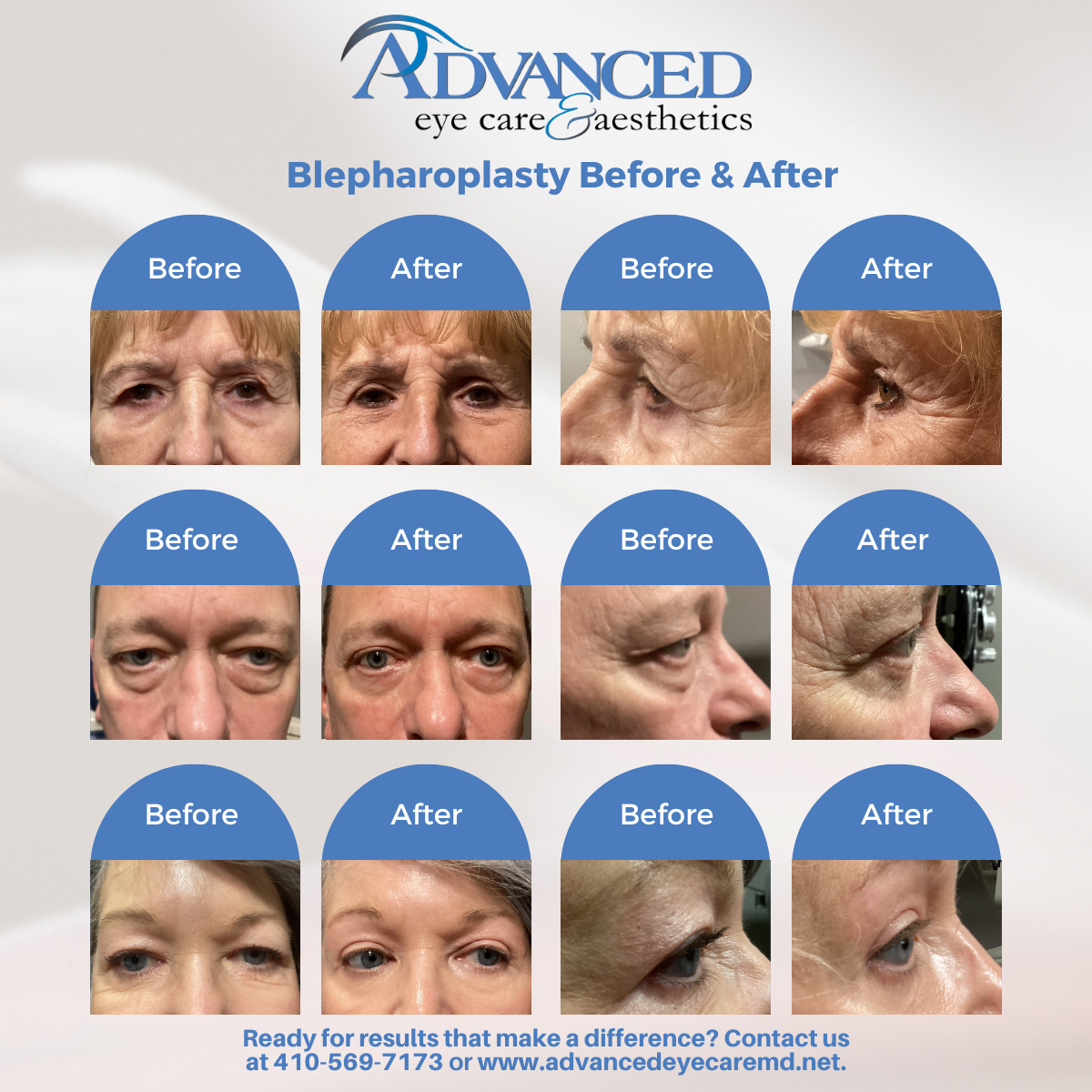To determine candidacy for blepharoplasty, it is necessary to have a consultation at Advanced Eye Care. At the consultation Dr. Habbu has will discuss post surgical goals and expectations and help decide what procedure(s) would be beneficial based on each specific case.
At the time of surgery, the patient will be given a local anesthesia to numb the area around the eyes and a mild sedative to help him/her stay relaxed during the procedure. The patient will be awake during the surgery, but relaxed and insensitive to pain. The blepharoplasty will take between to three hours, depending on the extent of the surgery. A small incision is made following the natural line of the eyelids, excess fat is removed and sagging skin trimmed, and the incision is closed with very fine stitches.
After surger the following temporary side effects may be experienced:
- Bruising, lasting from two weeks to a month
- Dry or itchy sensation in the eyes
- Excessive tearing
- Sensitivity to light
- Blurred sight
- Swelling at the corner of the eyelid
Please Note
- The eyes will be bandaged so a driver will be necessary
- Eyelids may feel tight and sore as the anesthesia wears off, but pain medications will be given to ease any discomfort.
- The patient will also be given eye drops to alleviate any dry or itchy feeling in the eyes.
- The patient will come back to Advanced Eye Care in 3 to 5 days after the surgery to have stitches removed.
Post operatively, patients should be able to read or watch TV in two or three days. Most people feel ready to return to work in 7 to 10 days. There may be sensitive to sunlight and wind for several weeks, so sunglasses should be worn and a special sun block made for eyelids.




